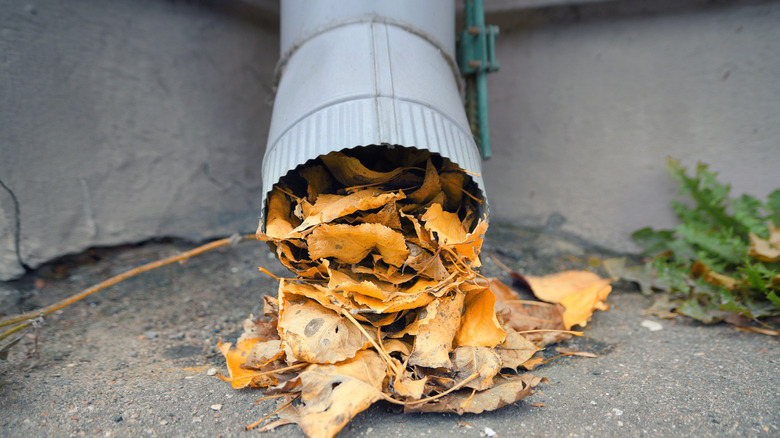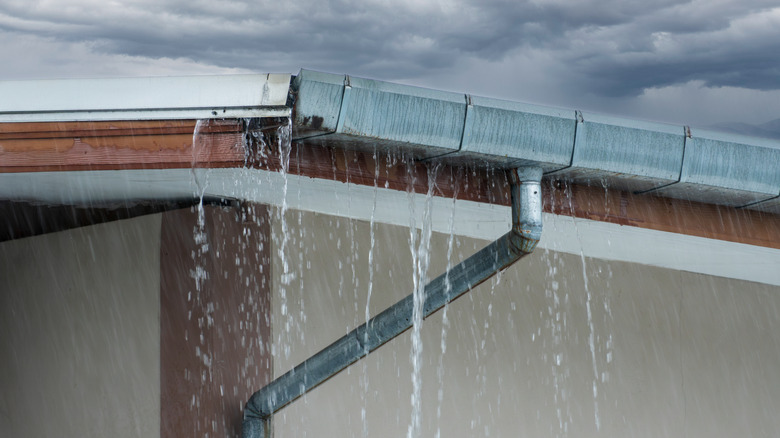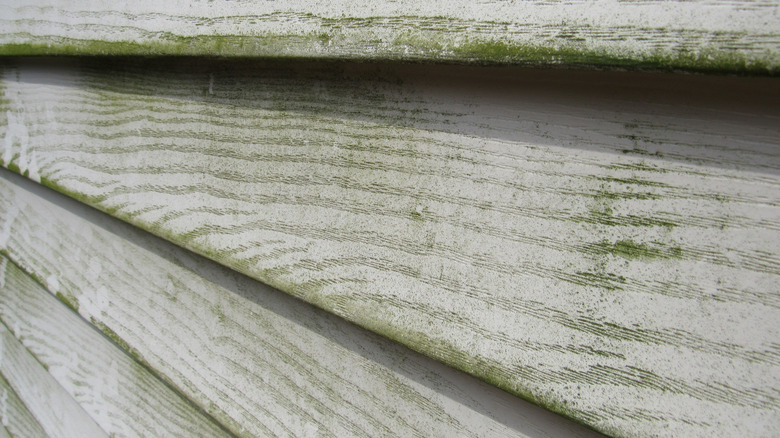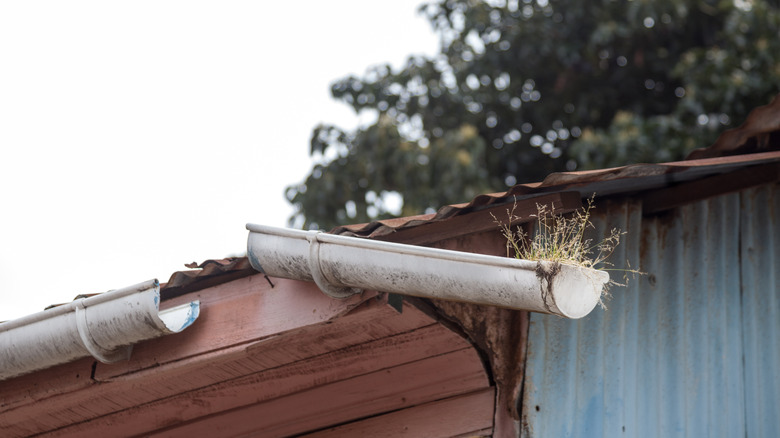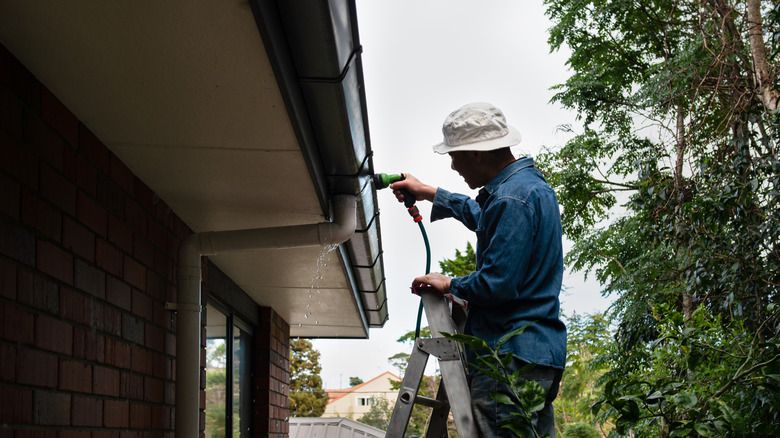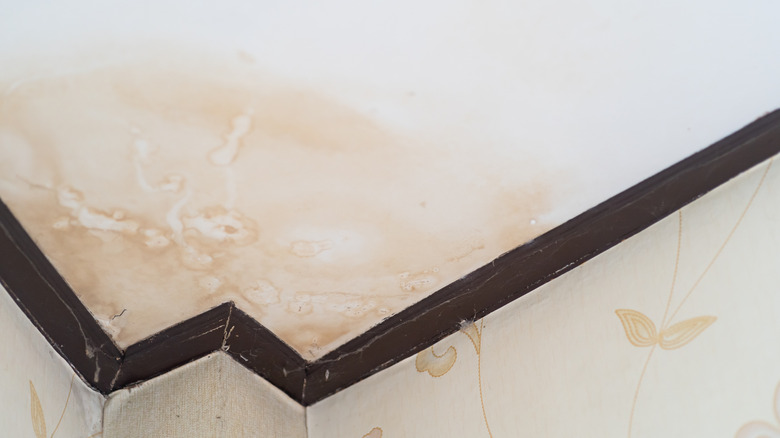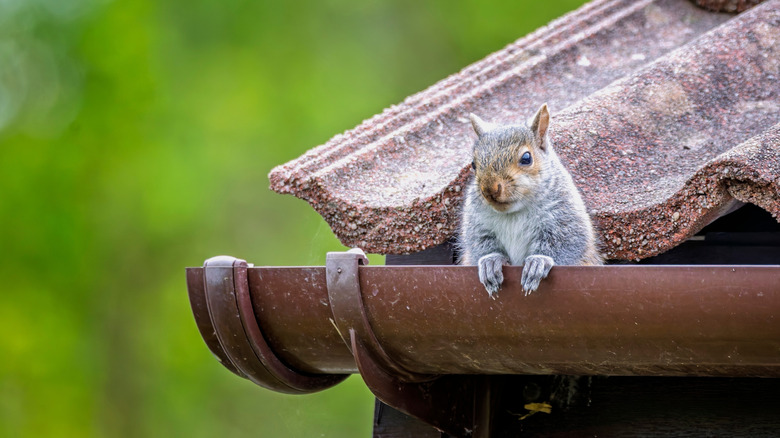Telltale Signs That Your Downspout Is Clogged
Although downspouts might be an eyesore you want to hide, they're an essential part of keeping your home safe and secure during heavy rain. While your gutters capture rain and keep water from pouring down the side of your home, downspouts redirect the water away from your foundation, reducing the likelihood of water damage. Because they play such an important role, it's crucial to keep downspouts working properly at all times — and something as simple as a clog can prevent that from happening.
Have you noticed your downspouts draining more slowly than usual, or not at all? When it comes to your gutter downspouts, clogs are a common problem, and they can be caused by anything from damage to leaves and twigs piling up. However, before a cause can be diagnosed, it's important to learn if a clog truly is the culprit behind the problems you're experiencing. This means learning to identify the telltale signs of a clogged downspout, such as overflowing water, structural damage, or even an increase in pests.
Before climbing up to inspect your gutters and downspouts, remember the most important factor: safety. Cleaning your gutters can be a risky ordeal, with a chance for falls or other hazards. This is especially true in larger homes that include two or more stories. While DIY gutter cleaning is possible, you may want to consider reaching out to a professional if you suspect any problems.
Water doesn't flow out of the downspout while raining
One of the first signs that you may have a clogged downspout on your hands is if it doesn't function while raining. While a light sprinkle may not be enough to see results, in significant rainstorms, your downspout should channel water from the gutters down and away from the base of your home. If water can't flow out, a severe clog can cause overflow — another clear warning sign of blockage.
Water pours over the edges of your gutters
If your downspout isn't pulling its weight, water that pools up in your gutters has to go somewhere. As a result, if your downspout is clogged, you may notice that water overflows over the side of your gutters instead. This is especially noticeable in heavy rain conditions or in light of a severe clog that isn't allowing any water to pass through. If you see overflow, it's time to clean your gutters or run a hose through the system to dislodge buildup — or call a professional if it's hard to reach.
Your siding has water stains or damage
Overflowing water or a non-functional downspout are some of the most explicit signs of a clogged downspout. However, if you don't observe these occurrences happening while it's raining, you may not ever see these telltale signs of a clogged downspout. Fortunately, there is something you can look for even when it's not raining. When your gutters overflow due to a clog, the water often runs down the side of your home. This can cause water stains, damage, or other problems with your siding that can persist even after the rain has passed.
You've noticed leaks in the seams of your gutters and downspouts
If the clog is minor or recent, you may not see overflowing gutters or visible damage just yet. Instead, you may need to look for signs that are more subtle, like leaks at the seams of your gutters or downspouts. When the water isn't able to flow down through your downspout, but there isn't enough to overflow, it may target other weak areas to escape. As a result, you may see small leaks or drips come from seams, joints, and similar areas.
Your gutters are sagging
One of the most common causes of a clogged downspout is debris. Fallen leaves, pine needles, acorns, twigs – any organic material that can make its way into your gutters can cause a clog. However, clogs don't just affect downspouts: they can affect your entire gutter system. As a result, if a buildup of organic debris is causing blocked water flow, the added weight can cause your gutters to sag or pull away from the house.
Your downspout fails testing with a water hose
In heavier rainstorms, it can be difficult to tell if your downspout is performing well. After all, a clogged downspout doesn't necessarily mean a full blockage, and it might be challenging to determine just how much water is flowing in the midst of rain. As a result, you may instead want to opt for a water hose test on a sunny day to determine flow. To do so, simply use your garden hose to add water to your gutters and inspect your downspout. This can sometimes fix minor clogs by knocking debris loose when it's dry.
There are leaks in your basement
It might seem unrelated, but a clogged downspout can lead to water problems in your home. Downspouts are designed to move water away from your home's foundation. If this isn't working correctly, you could start to see issues pop up in your basement. While there are other causes of water damage to be wary of, any signs of leaks in your basement could also be a sign that your downspout isn't functioning correctly. When dealing with a severe problem like this, it may be beneficial to bring in a professional to find the source of a basement leak.
You've noticed roofing damage
When you think about how gutters and downspouts work, it may seem like only your foundation or basement is at risk when it comes to a clogged downspout. However, you may also notice damage to your roof if your downspouts aren't working as they're supposed to. This is because not only can clogged downspouts cause water to puddle around your foundation, but they can also pool up and impact your roof. Downspout-related roof damage can appear as missing shingles, ceiling stains, or compromised insulation.
You're dealing with pest infestations
Have you seen an increase in mosquitoes around your home? What about other common household critters, like rodents or birds? If so, this could be an indication that your downspout is clogged. Many common gutter pests are drawn to the debris inside clogged downspouts, using it as both shelter and nesting material. Having a clogged downspout can lead to foundation damage, but having a pest infestation as well can lead to other problems around your home.
